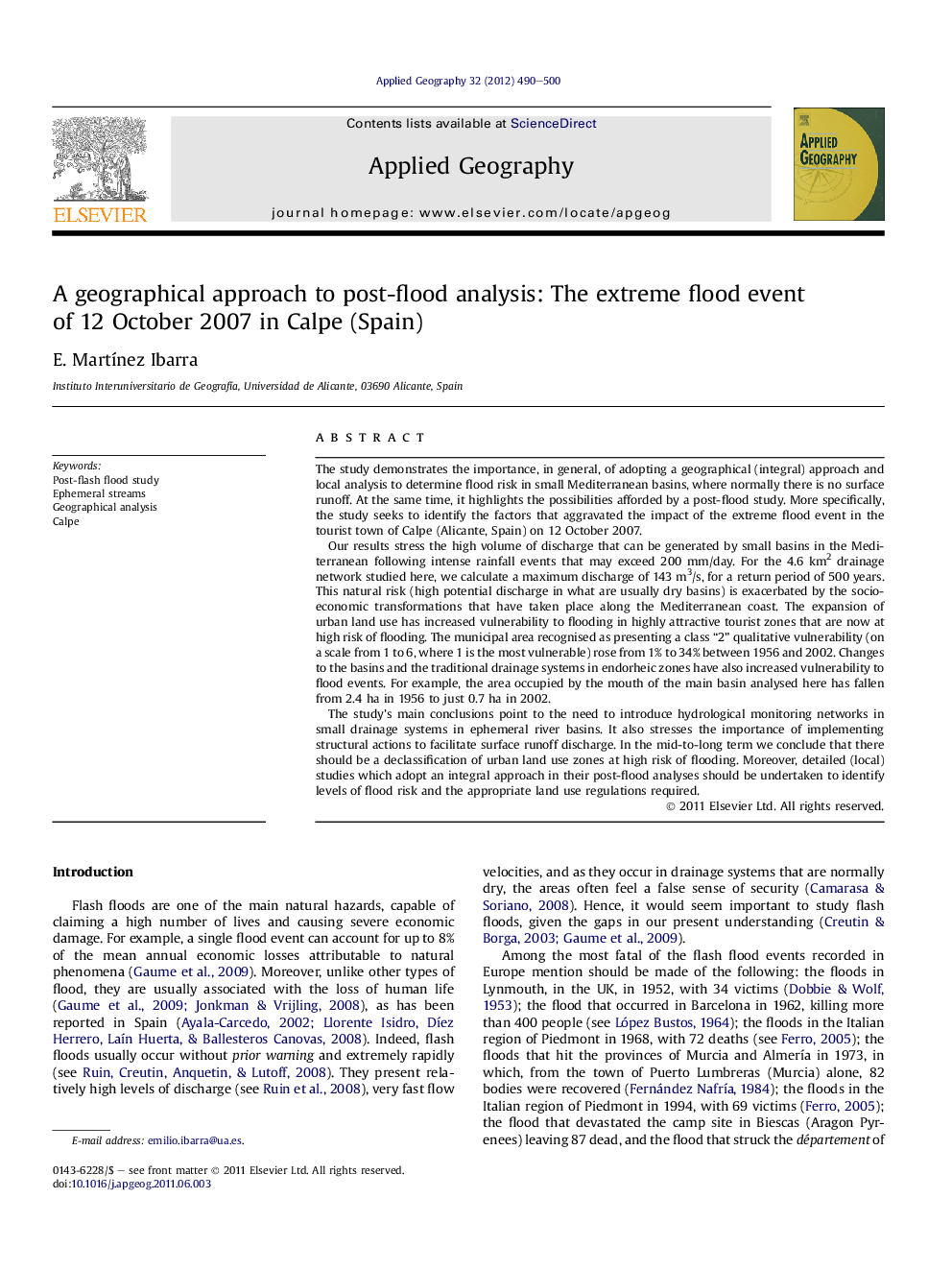| Article ID | Journal | Published Year | Pages | File Type |
|---|---|---|---|---|
| 83573 | Applied Geography | 2012 | 11 Pages |
The study demonstrates the importance, in general, of adopting a geographical (integral) approach and local analysis to determine flood risk in small Mediterranean basins, where normally there is no surface runoff. At the same time, it highlights the possibilities afforded by a post-flood study. More specifically, the study seeks to identify the factors that aggravated the impact of the extreme flood event in the tourist town of Calpe (Alicante, Spain) on 12 October 2007.Our results stress the high volume of discharge that can be generated by small basins in the Mediterranean following intense rainfall events that may exceed 200 mm/day. For the 4.6 km2 drainage network studied here, we calculate a maximum discharge of 143 m3/s, for a return period of 500 years. This natural risk (high potential discharge in what are usually dry basins) is exacerbated by the socio-economic transformations that have taken place along the Mediterranean coast. The expansion of urban land use has increased vulnerability to flooding in highly attractive tourist zones that are now at high risk of flooding. The municipal area recognised as presenting a class “2” qualitative vulnerability (on a scale from 1 to 6, where 1 is the most vulnerable) rose from 1% to 34% between 1956 and 2002. Changes to the basins and the traditional drainage systems in endorheic zones have also increased vulnerability to flood events. For example, the area occupied by the mouth of the main basin analysed here has fallen from 2.4 ha in 1956 to just 0.7 ha in 2002.The study’s main conclusions point to the need to introduce hydrological monitoring networks in small drainage systems in ephemeral river basins. It also stresses the importance of implementing structural actions to facilitate surface runoff discharge. In the mid-to-long term we conclude that there should be a declassification of urban land use zones at high risk of flooding. Moreover, detailed (local) studies which adopt an integral approach in their post-flood analyses should be undertaken to identify levels of flood risk and the appropriate land use regulations required.
► Identification of the shortcomings in flood risk regulations at the local scale. ► Stressing the importance of post-flood analyses for the determination of flood risk. ► Stressing the importance of local-scale analyses in flood risk.
